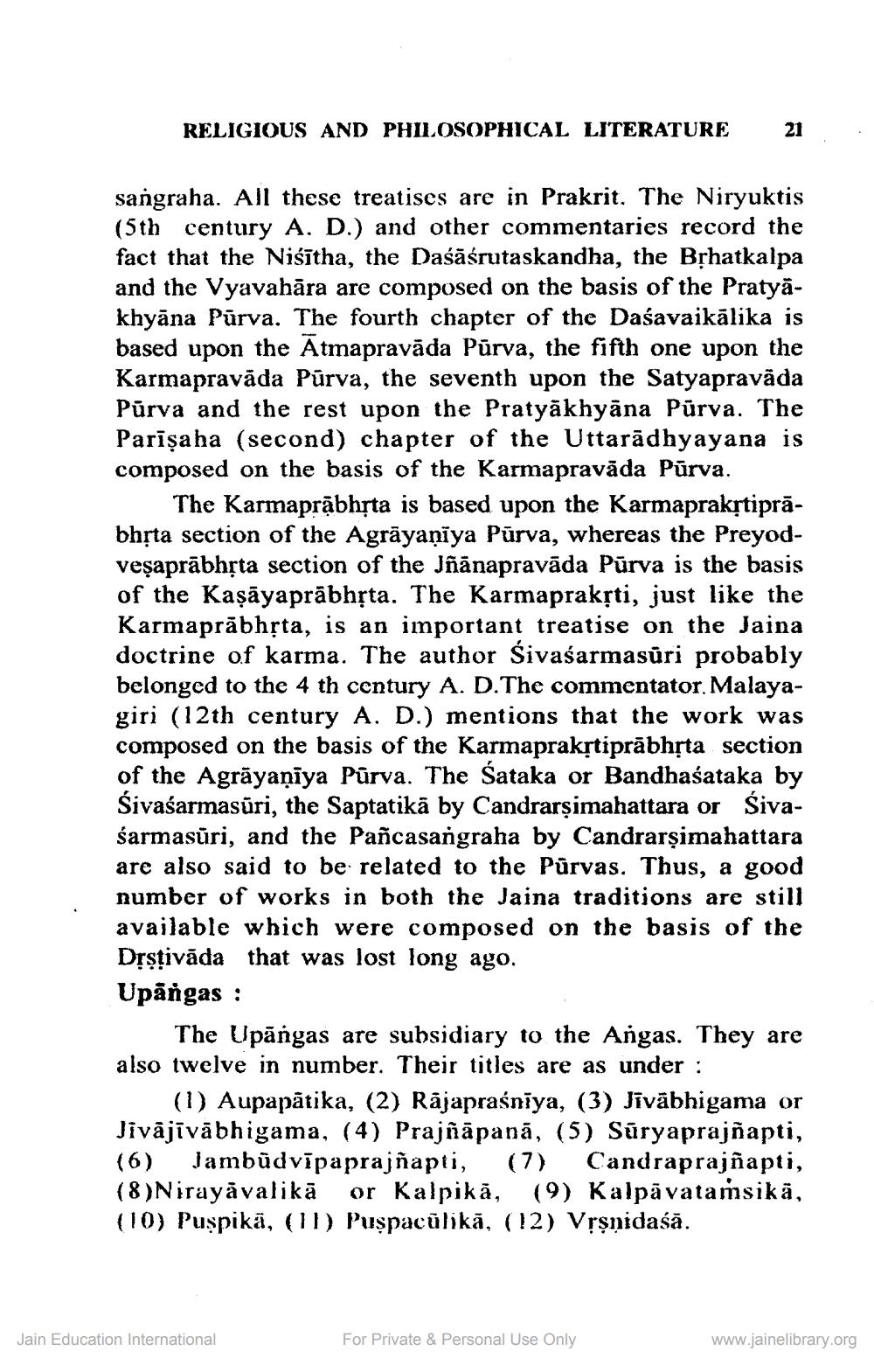________________
RELIGIOUS AND PHILOSOPHICAL LITERATURE
sangraha. All these treatises are in Prakrit. The Niryuktis (5th century A. D.) and other commentaries record the fact that the Niśītha, the Daśāśrutaskandha, the Bṛhatkalpa and the Vyavahāra are composed on the basis of the Pratyakhyāna Pūrva. The fourth chapter of the Daśavaikālika is based upon the Atmapravāda Pūrva, the fifth one upon the Karmapravāda Purva, the seventh upon the Satyapravāda Purva and the rest upon the Pratyakhyāna Pūrva. The Parīṣaha (second) chapter of the Uttaradhyayana is composed on the basis of the Karmapravāda Pūrva.
21
The Karmaprabhṛta is based upon the Karmaprakṛtiprābhṛta section of the Agrāyaṇīya Pūrva, whereas the Preyodveṣaprabhṛta section of the Jñānapravāda Pūrva is the basis of the Kaṣāyaprabhṛta. The Karmaprakṛti, just like the Karmaprabhṛta, is an important treatise on the Jaina doctrine of karma. The author Śivaśarmasūri probably belonged to the 4 th century A. D.The commentator. Malayagiri (12th century A. D.) mentions that the work was composed on the basis of the Karmaprakṛtiprābhṛta section of the Agrāyaṇīya Pūrva. The Śataka or Bandhaśataka by Śivaśarmasūri, the Saptatika by Candrarṣimahattara or Śivaśarmasŭri, and the Pañcasangraha by Candrarṣimahattara are also said to be related to the Purvas. Thus, a good number of works in both the Jaina traditions are still available which were composed on the basis of the Dṛṣṭivāda that was lost long ago.
Upangas:
The Upangas are subsidiary to the Angas. They are also twelve in number. Their titles are as under :
(1) Aupapātika, (2) Rājapraśnīya, (3) Jīvābhigama or Jivajīvābhigama, (4) Prajñāpanā, (5) Sūryaprajñapti, (6) Jambudvipaprajñapti, (7) Candraprajñapti, (8)Nirayāvalikā or Kalpika, (9) Kalpavataṁsikā, (10) Puṣpikā, (11) Puṣpacŭlikā, (12) Vṛṣṇidaśā.
Jain Education International
For Private & Personal Use Only
www.jainelibrary.org




